How to Grow Cilantro & Harvest Big Like a Farmer
Author: Jen Worst | Editor: Omar Alonso
Review & Research: Jen Worst & Chris Miller
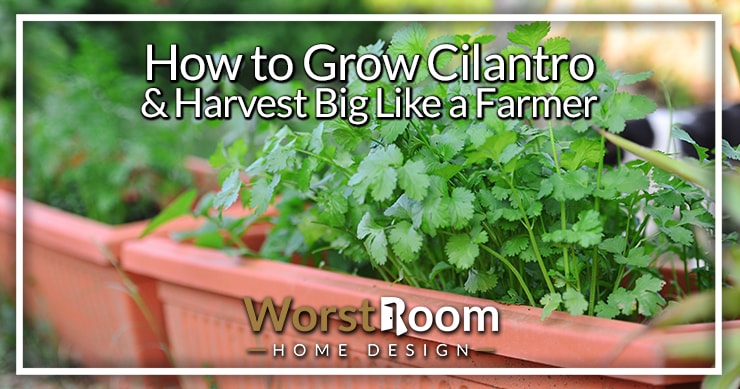
Learning how to grow cilantro is a piece of cake and we'll tell you exactly how it's done. Doing it right is the difference between massive harvests and a great taste versus a weak quantity that tastes like something's wrong with it.
Cilantro or coriandrum sativum comes from the Apiaceae family. Other famous members of this family include celery, parsley, and the various types of carrots. The entire plant is edible; each part has a name and is known universally.
The seeds of the plant are dried and are called coriander seeds. That's why you see people often call the plant coriander plant or Asian parsley while calling the leaves of the plant "cilantro". Cilantro is not one of the types of parsley, to be clear.
This tasty herb is used worldwide in several cuisines, especially in the Middle East and South East Asia. It's one of the top ingredients in Indian and Pakistani foods, too. It's most often used in curry, soups, pasta, masalas, etc.
Now, where can you find fresh cilantro? The answer is simple... from your very own garden! Here is a comprehensive guide for you on growing cilantro you can have a bountiful harvest whenever you want without having to head to store.
How to Grow Cilantro
Let's talk about this from the beginning of the process to the end, moving from the general growing conditions, on how to plant cilantro, how to take care of the plants as they thrive, and then harvesting and storing it for use immediately and over time.
Cilantro Growing Conditions
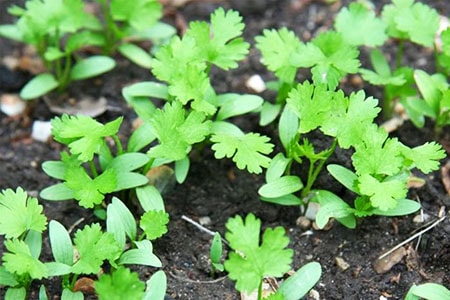
If you live in an area with mild summers then you can plant your preferred types of cilantro in an area that has full sun exposure. If your summers are extremely hot then it's recommended to provide some shade for a portion of the day.
You want to make sure your soil drains well so you don't have constantly soaked roots, which can lead to root rot. Before you plant, it's best to till in some compost or fertilizer to increase the amount of food reserves available to the plants as they grow.
If you're really into it you can get the N-P-K numbers of your soil analyzed so you can use the right type of fertilizer to boost the nutrition value. For instance, if you don't need any more nitrogen you can use a 0-20-20 fertilizer.
After planting and germination you can cover the area in a few inches of mulch to help preserve moisture in the soil and to keep weeds from growing which will compete with your plants for the nutrients available.
More than the soil itself, you have to prepare the seeds of this plant before sowing them into your garden. Cilantro seeds are usually called coriander seeds, and they come in twos encapsulated in a single husk.
Growing cilantro from seeds isn't a must, but let's talk about it in case you want to do that. So first of all, the husk is removed or crushed gently. The husk can serve as a source of food if you let it stay, but you have to break it enough that water and nutrients can reach the seeds inside.
Second of all, the seeds are to be soaked in water for about 24 or 48 hours. This helps them during germination, making sure they have access to water for sure. Finally, dry the soaked cilantro seeds off and prepare to plant them in the soil.
How to Plant Cilantro
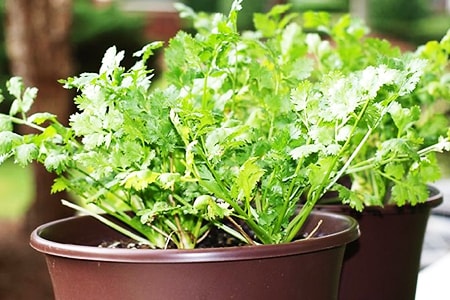
Now that you have prepared your seeds, you can plant them in a pot inside and then transplant them later on once they're stable, or you can directly plant the seeds outside.
Cilantro is not a hot weather loving plant, but they also need a lot of sun exposure. It's a tricky balance that depends on where you live.
However, in extremely high temperatures, the plant is going to bolt. Bolting is basically a plant's attempt to grow and spread their seeds before they're ready. It makes your harvest taste bitter.
So we recommend planting the seed in a place where it gets its sunlight during the early morning or later in the day but remains shaded when the sun is at its peak. Avoiding the high heat during the noon hours is best if possible.
It's also suggested to plant cilantro 3 to 4 inches apart from each other because when the leaves grow, they may cover each other too much, and upon not getting sunlight, the plant may wilt.
The soil should be drained well and but frequently moist with a lot of humidity under the mulch. Plant the cilantro seeds 1/4th of an inch deep in the soil. If you are going to use a pot, make sure it can hold at least 8 inches of soil in depth.
Cilantro is usually planted in late spring or early summer. With cilantro plants, you can do succession sowing, and this would give you fresh harvest throughout the summer if you start in spring.
This means you can plant some seeds, wait a week and plant some more, and so forth so they mature with the same time periods between them. This gives you fresh cilantro over time rather than having to store a ton at once.
In regions that don't get extremely cold, you can be growing cilantro during winter as well. You just want the temperatures to stay within the range of 50 and 85 degrees Fahrenheit.
Cilantro Plant Care
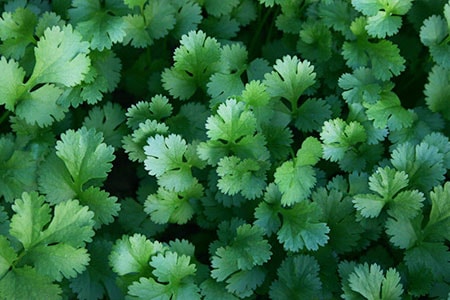
If you want to know how to take care of cilantro, look no further. Cilantro is usually planted in the spring and early summer to escape the hot weather when they're most vulnerable.
Another reason is that, when cilantro is planted during the summer, it can end up tasting bitter. There's no point in risking that for all the time it takes to enjoy a harvest of this herb.
Watering daily isn't essential. You should only water them when you feel that the soil is getting dry. However, make sure you are watering the plants and soil thoroughly, knowing it will safely drain.
Weeds are no plant's friends, and so whenever you see some weed growth around your cilantro crop, make sure to eliminate them completely. They'll eat up a lot of the food meant for your tasty herbs. Pulling up weeds is crucial in the process of how to grow cilantro.
As soon as you see a flower budding on top of the main stem, make sure to cut it off. This will help in driving all the energy in the plant into growing the leaves larger. Remember, we want a maximum amount of leaves of the biggest size when it comes to cilantro.
When the plant reaches the height of 2 inches, it requires proper moisture and fertilizer for the right growth. So if you were slacking before now, it's time to get yourself in gear and take it seriously.
The plant must be watched carefully because it has a short life-cycle. Keep on pruning the plant. It will elongate closer to harvest time as a visual aid to knowing when it's time to gather the fruits of your labor.
How Tall Does Cilantro Grow?
The mature cilantro plant (once flowering) can reach a height of 24 inches or 2 feet, which includes the stalks of the flowers.
How Much Sun Does Cilantro Need?
In northern zones with cooler summers, cilantro needs full sun exposure all day. In hotter southern zones, they need some shade throughout the day, preferably around noon time or they risk bolting.
How to Harvest Cilantro
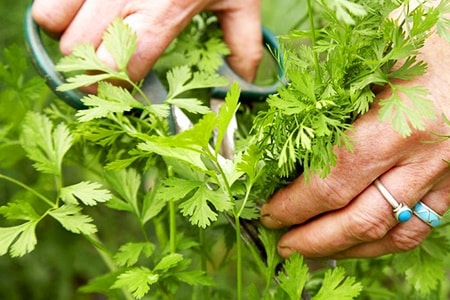
You can harvest Cilantro any time after 45 to 70 days after germination. Once you take leaves from the plant, it's best to wait at least 3 to 4 days before harvesting from the plant again.
If you want to harvest all of the leaves at once, you should cut the entire plant off about 1/3rd of the way down from the top in order harvest the existing leaves while leaving the other 2/3rds of the plant to grow new leaves.
If you cut them off in this fashion, you need to wait at least a week before doing so again, unless they're growing so good that they've maxed out their bounty again.
Make these cuts with sharp shears or scissors so you create the least amount of trauma to the plant. Ensure your shears are clean as well so you don't introduce any diseases or illnesses to the remaining plant.
How to Store Cilantro
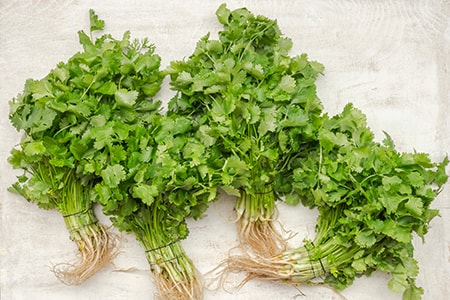
Cilantro leaves wither fast after harvesting. After they become overly dry, they don't retain their flavor. This is why we suggest using them as fresh as possible. However, if you have to harvest a big amount of these leaves, there are a couple of ways to store them.
First of all, you can refrigerate them, which would keep them fresh for at least 3 to 4 days. If you store them in the fridge in a zip-lock bag, then you might squeeze out another day of freshness.
Secondly, you can cut their stem off a little, and place them in a mug full of water like you keep flowers. Wrap plastic around the leaves to keep them fresh for as long as possible. This can keep them fresh for another couple of days if you do this from the beginning but it's a bit of a nuisance.
If you want to store cilantro for a much longer period of time, you can simply freeze the cuttings in a zip-lock bag and remove them when you're ready to use them. Be wary of the leaves sticking together once frozen though. You can separate them into different bags to combat this problem.
Diseases Found in Cilantro
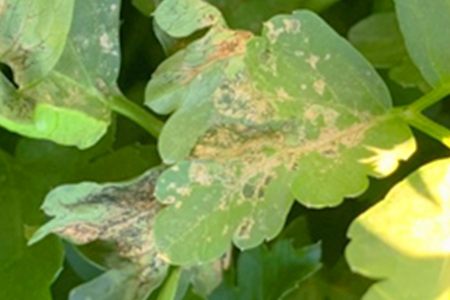
Cilantro has a strong smell, which is believed to repel insects from its plant, which is why there are usually no problems with the plant. However, your cilantro plant may suffer from powdery mildew and leaf spots.
Leaf spot is a problem due to improper ventilation of air and too much moisture. You'll see yellow spots on your plant, which will eventually turn brown. To eliminate this problem, you should make sure that the plant has well-drained soil and is placed in a well-ventilated space, not grown too closely together.
Powdery mildew is due to the excessive heat in hot weather. You will see a powdery coating forming on the cilantro leaves. You can eliminate this problem by watering the plant regularly and keeping them safe from one another, because this illness can spread.
Different Types of Cilantro
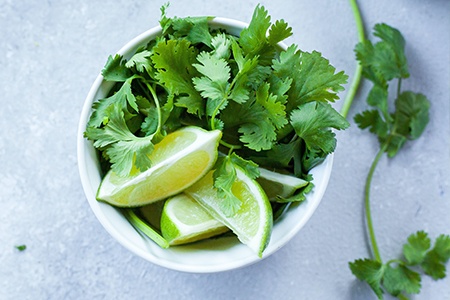
There are many varieties of cilantro, but here are the ones most people recommend, each with specific benefits if you want to know how to grow cilantro. These may make it easier depending on your region.
If you don't want your plant to bolt early, and get the strong flavor of Cilantro, Santo and Marino are the best options for you.
If you live in a colder region, Festival is the best variety for you. It has big leaves, good flavor, harvests faster, and can grow in winters. The Cruiser type has big leaves as well.
If you worry you can't keep up with observing them as much, the Calypso variety are the slowest to bolt when left in hot temperatures are sub-optimal watering.
That's How to Grow Cilantro
Growing cilantro is a piece of cake. With the efforts of growing one plant, you get two different herbs: both the seeds and the leaves. These have different flavors and purposes in cooking, which opens up some additional options in the kitchen.
Cilantro grows easily and fast. You can get fresh produce throughout the summer if you start in spring. There's no motivation bigger than having fresh cilantro leaves for your dishes.
No matter which region you live in, once you learn how to grow cilantro, you can reap a regular harvest across two seasons if you do it right. Follow our lead and you'll do just fine.



